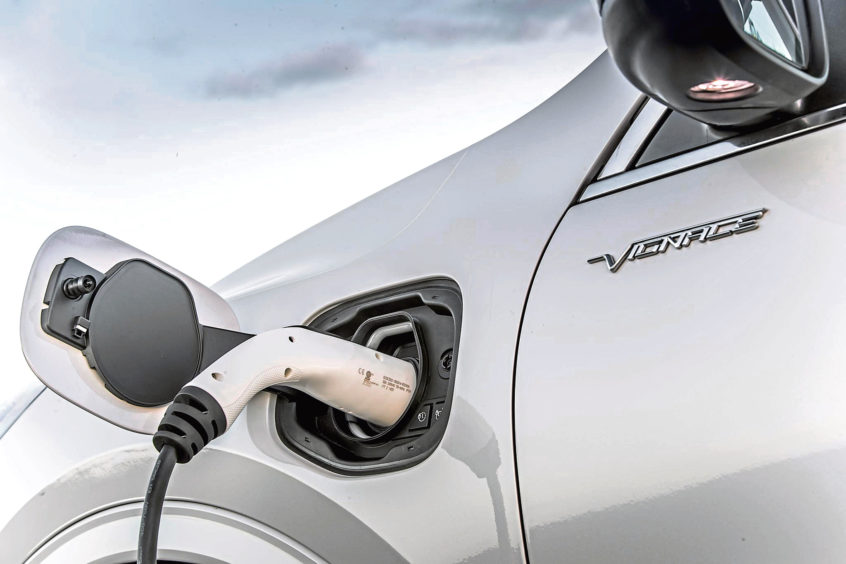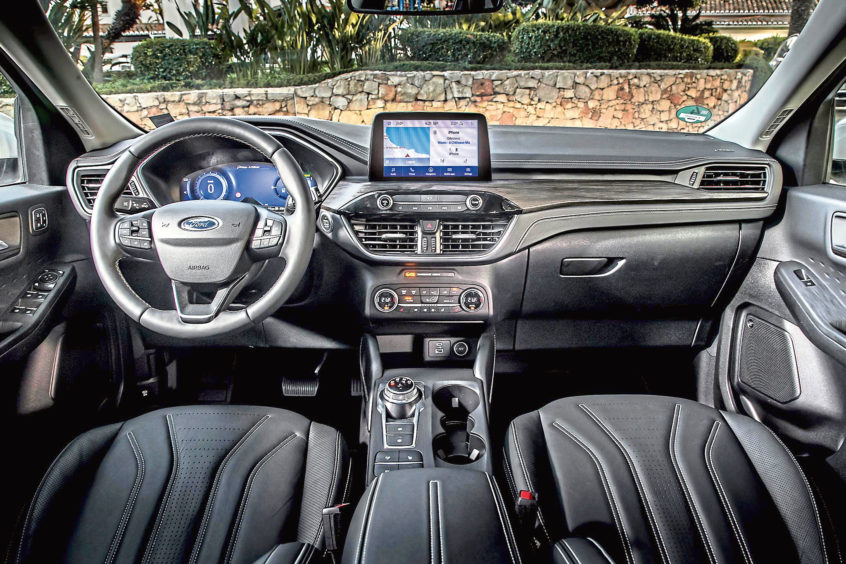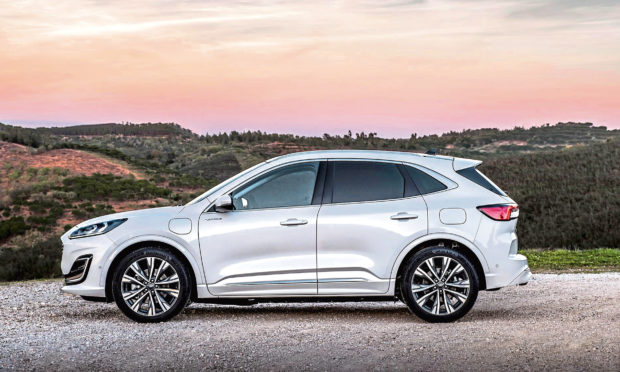Following a slow start, the Kuga SUV has been one of Ford’s bestselling models for a while now.
The latest generation is bigger than before, with a whole new styling direction and, perhaps most importantly, a commitment to electrified powertrains from a brand that has lagged somewhat behind rivals in this department. The plug-in hybrid variant we’re testing here is a pretty big deal then, thanks to lower running costs from a car that buyers already seem to love.
The new Kuga has gone down a completely different styling direction to its predecessor, taking cues from the Focus – in fact from some angles it’s easy to mistake it for Ford’s hatchback model.
Elsewhere, the interior’s been brought up a notch and there are new technologies in the cabin and under the skin to improve the driving experience, such as driver safety and assistance systems.
It sits on Ford’s new C2 vehicle architecture, which the company says has resulted in the new Kuga being lighter than its predecessor, more aerodynamic for better fuel economy and with better crash safety.

The hybrid powertrain uses a 2.5-litre petrol engine combined with an electric motor and generator that are powered by a 14.4kWh battery. This provides a decent, usable electric-only range of 35 miles, which means you could get away with rarely even using the petrol engine.
It makes a total of 222bhp with a top speed of 125mph. Fuel economy figures are pretty wild at 202mpg, but only if you’re regularly topping up the batteries and only taking short trips is that a possibility, though we saw economy figures in the 60s during mixed driving. CO2 emissions are low, at just 32g/km.
It’s a rather hit and miss powertrain to use. At lower speeds, where the electric motor is doing most of the work, it’s brilliant, providing smooth but punchy response and silent operation. At motorway speeds with the engine on, it’s still quiet enough, and even when the engine kicks in around town, it’s not too intrusive. However, the CVT gearbox means that accelerating harder using the petrol engine is unrewarding.
There’s a lot to like about the Kuga but the way it drives is its weak point. First, the positives: as we’ve come to expect from Ford, it handles well, doing a good job of restraining its heft in corners, while also not being intimidating to drive around town.
However, there are quite a few negative aspects to the driving experience, such as the bizarre, rubbery self-centring of the steering wheel as you turn. The brake pedal gives little feedback but is very sensitive, which makes slowing down smoothly difficult. We’re also not convinced by the ride, which feels very heavy over bumps.
In terms of looks the latest model has a sleeker appearance. From a distance, it looks like a family hatchback rather than an SUV, but still offers the high driving position and practicality that’s made this segment so popular.
Aside from the softer styling, some of this non-SUV look is achieved by having a more reclined windscreen and lower roof angle. Despite this appearance, it’s actually bigger than the outgoing model.
The cabin is one of the Kuga’s trump cards, because it feels exceptionally well made. Our top-spec Vignale also comes incredibly well-specified, with high-quality materials throughout and luxury extras such as a heated steering wheel and leather-wrapped instrument panel helping to improve the overall feel.
It’s very spacious too, making it ideal for families. Rear seat passengers, big and small, will have plenty of leg room, while boot space is decent at 411 litres.
If you’re not looking to stretch to the price of a top-spec model, the Kuga’s interior has all the practicality and build quality you could need in a family car.

There are five trim levels available: Zetec, Titanium, ST-Line, ST-Line X and Vignale. However, if it’s this plug-in hybrid powertrain you’re after, that excludes Zetec. Prices start at £33,085 for the Titanium PHEV, and rise through the sporty-looking ST-Line models to the luxury-focused Vignale we’ve been testing.
For this, prices start at £37,785 and equipment includes 19-inch alloy wheels, full LED headlights with automatic anti-glare full beam, leather seat trim with heated front seats and heated steering wheel, Vignale body kit, metallic paint, a fully digital 12.3-inch instrument cluster, automated park assist and a head-up display. The Kuga PHEV is so close to being great. Its styling is sleek and unimposing, the interior is well made and spacious, and the electrified portion of its powertrain makes for a relaxing, effortless driving experience.
However, it’s hard to get away from the fact it’s a bit of a letdown behind the wheel. The inconsistent control weights make smooth driving a chore and detracts from what should be a brilliant family SUV.
THE FACTS
- Model: Ford Kuga PHEV Vignale
- Price: £37,785
- 0-60mph: 9.2 secs
- Top speed: 125mph
- Economy: 202mpg
- CO2 emissions: 32g/km
